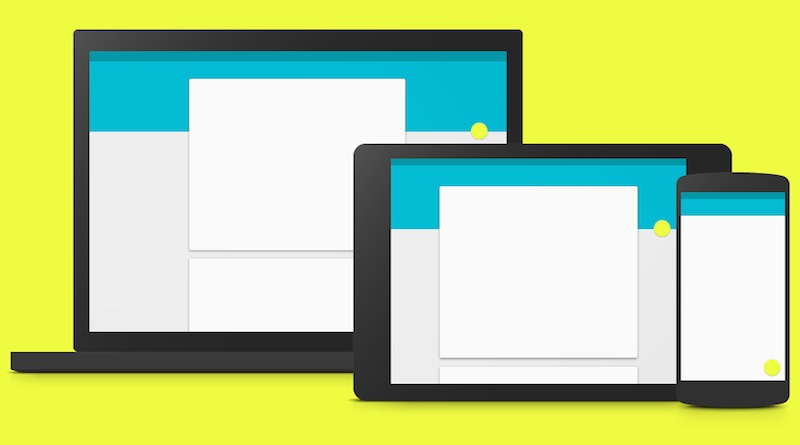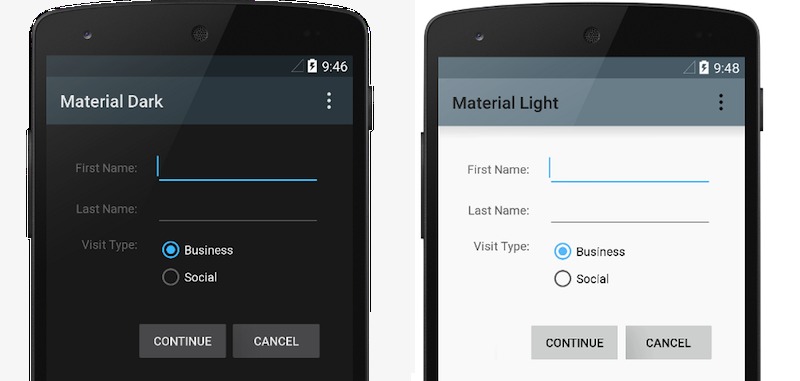
We have yet to actually taste the sweetness of Android 5.0 Lollipop on our current devices but fan boys are getting more excited especially after the Material Design was introduced at the I/O Conference last June. More and more apps are being updated the past few weeks even before the official rollout of the new Android mobile OS.
Material Design is a first from the Android team. It’s a visual language for the users that explains principles of good design with innovation and integration of science and technology. Material Design could show us the future of Android but it still is a work in progress.
Android developers aim to create a system that will bring the same experience across all devices and platforms. Since Google is not locking down Android, it is expected to come to cars and TVs in the near future. Someday, Android-powered device users will see the same UI not only across all compatible devices but also across all brands.
Material Design and Android Lollipop being marketed as one tough candy could be the start of something new for Google. The mobile platform is more popular than iOS, in terms of the number of Android devices, but it needs to introduce something newer to the market.
Material Design follows three important principles: Material metaphor; Bold, graphic, intentional; and Motion. Google is kind enough to share them with Android enthusiasts like you and me. When Android “L” was introduced last February, developers had no idea that Material Design guidelines will be released for the Android 5.0. It was a good call though because the new standards served as a feedback mechanism from developers.

Simply put, the Material Design is Google’s very own “guide for visual, motion, and interaction design across platforms and devices”. Most Android apps today are being updated with material design in mind together with the new functionalities of Android 5.0.

Unified. This is what Google wants now for the Android as a platform and the apps already available or have yet to be developed. All these follow one set of guidelines for design, physics, and rules across all devices. It’s not only for Android but also for Google’s other products from the web to the Chrome OS, etc.
Is Google entering a Material World? Maybe. Material Design is about to change not just the Android game but the many industries and markets Google are in. If that is the case, then gadget town might enter into a new Material era, at least, for the majority of geeks who rely on Google products and services.
Material Design is more than just about user interface. This isn’t about Google trying to monopolize the software system and not giving OEMs a chance for customization. Google wants app developers and device manufacturers to incorporate the set Material Design elements in their apps and products. The result is a unified Google platform that is not mainly Android nor Chrome but a unified one—uniquely Google’s.
Google has so many services and products already. It’s such a big company that uses various technologies. It has excelled in many fields: search, browser, hardware, operating system, glasses, and now smartwatches. The top dogs of Google must have finally seen the light and realized that simplicity is highly favored, therefore, bring all those Google products into one experience.
Material Design is about a company that will try to change our lives. Technology must be smarter. If most of the apps available today are intuitive, Material Design will change all that. Googles wants to bring the idea of “paper” for a more realistic experience—think depth, shadows, shape, and layers—like a real cardstock.
A unified look and experience brought about Material Design would also mean “constraints” for developers and manufacturers. The lesser the differences among apps and platforms, the better.
SOURCES: Android Developers










I think Material Design is one of the best things to come to Android.
“Material Design is a first from the Android team.”
No it’s not. Material Design is not from the Android team. It’s an overarching set of guidelines for all of Google. You should be seeing Material Design be implemented on Chrome and all other Google hardware and software products and services. As long as you stay within the Google domain your entire world will soon be Material Design
Is this Google’s response (or part of) to fragmentation? (the fruit ppl’s favorite knock on android)nor that it bothers me anyway